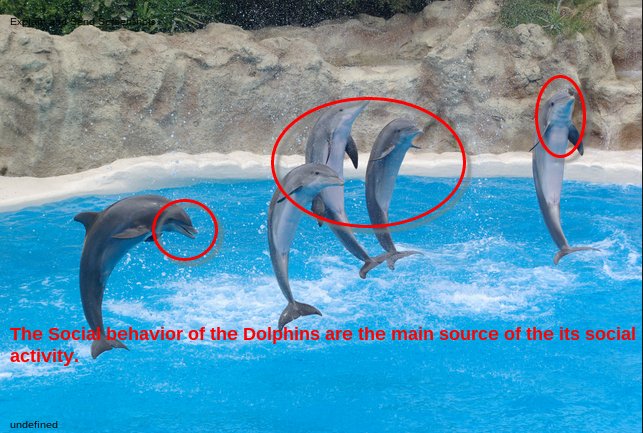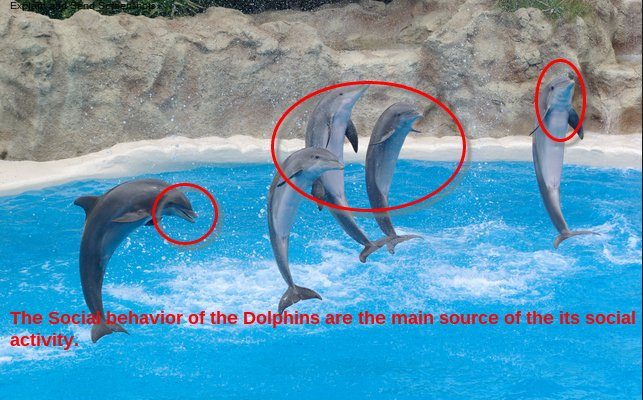
When you think of dolphins, you might imagine them leaping joyfully above the waves or playfully surfing along boats. But beneath all that playful exterior lies a complex creature with fascinating adaptations. From highly developed communication skills to streamlined bodies, bottlenose dolphins are a great example of how evolution has shaped a species to fit perfectly within its environment. Let’s dive a bit deeper into these incredible adaptations and see what truly makes these dolphins stand out.
Streamlined Bodies for Efficient Swimming
One of the first things you’ll notice about bottlenose dolphins is their sleek, hydrodynamic bodies. Their shape is similar to a torpedo—narrow at both ends and fat in the middle—which allows them to slice through the water with minimal resistance. This is crucial for a species that can reach speeds of up to 20 miles per hour!
The smooth skin of a dolphin also plays a role in reducing drag. With tiny structures called denticulate (think of them as tiny teeth) covering their skin, dolphins can glide effortlessly through the water. It’s almost as if they are wearing a super high-tech suit that helps them swim faster and more efficiently. So the next time you see a dolphin, remember that their bodies are perfectly designed for life beneath the waves.
Echolocation: Nature’s Sonar
You might be wondering how dolphins find their way around in the vast ocean, especially when they can’t rely on sight alone. This is where echolocation comes into play. Bottlenose dolphins emit a series of clicks and whistles, which bounce off nearby objects and return to them. It’s a bit like the click of a camera, capturing a snapshot of their surroundings in sound.
With this incredible ability, dolphins can detect prey, navigate through murky waters, and even communicate with each other. Imagine being in a dark room and having the ability to “see” everything around you just by making noises. That’s how dolphins manage to thrive in their underwater world. This skill is essential when hunting for fish or dodging predators, making their survival in the ocean a whole lot easier.
Advanced Social Structures
Bottlenose dolphins are known for their friendly and social nature, which is another key adaptation that helps them thrive. They typically live in groups called pods, which can range from just a few dolphins to over a hundred. This social structure provides numerous advantages, like protection from predators and more effective hunting strategies.
When dolphins are in a pod, they are better at coordinating their efforts to hunt for food. For instance, they may work together to herd fish into tight balls, making it easier to catch them. Plus, being part of a group helps them communicate more effectively, which is vital for maintaining strong relationships and social bonds. It’s a bit like a team sport where everyone plays a role, and that teamwork ensures they all have food on the table—or, in this case, fish on the menu!
Skin Adaptations for Temperature Regulation
Have you ever walked into a chilly ocean and felt that shiver? Bottlenose dolphins, however, have adapted to keep themselves warm in the cold underwater environment. Their skin is thick and insulated, helping them maintain body warmth even in cooler waters.
In addition to this insulation, dolphins have a layer of fat called *blubber* just beneath their skin. This fat not only keeps them warm but also provides an energy reserve during times when food is scarce. Think of it like how we might enjoy a hearty meal in winter to keep us cozy. This adaptation allows dolphins to thrive in various water temperatures, making them versatile dwellers of both warm coastal waters and cooler ocean depths.
Unique Communication Skills
When it comes to communication, bottlenose dolphins are like the chatterboxes of the ocean. They use a variety of sounds, including clicks, whistles, and body language, to express themselves. Each dolphin has its own unique whistle, much like a name, that allows them to identify and call to one another.
This impressive communication skill is vital for coordinating activities within their pods, including hunting and socializing. It’s fascinating to think that while we might send texts or make phone calls, dolphins have developed their own sophisticated language that allows them to share information and strengthen their social ties. This adaptability not only enhances their survival but also makes their interactions much richer and more meaningful.
The Role of Play in Development
You might think that dolphins only play for fun, but there’s much more to it! Play is a crucial adaptation that helps bottlenose dolphins develop important skills. When dolphins engage in playful activities—like leaping out of the water or riding waves—they are practicing hunting techniques or social behaviors that will be vital for their survival.
Additionally, play helps strengthen bonds within the pod. Young dolphins learn from older ones, mimicking their movements and sounds, which helps them better adapt to adult life as they grow. So when you see dolphins playing in the surf, remember that they’re not just having fun; they’re also honing their skills and building their social networks. It’s a win-win situation!
Bottlenose dolphins are not just charming entertainers of the ocean; they are also well-equipped marvels of nature. From their streamlined bodies and advanced echolocation skills to their social structures and playful behaviors, every adaptation helps them thrive in their fluid environment.
By understanding these adaptations, we can appreciate how incredible these creatures truly are. Their unique features not only ensure their survival but also highlight the importance of preserving their habitats. After all, in the vast underwater world, every little detail counts. So the next time you catch a glimpse of a bottlenose dolphin, take a moment to marvel at the incredible adaptations that allow it to thrive beneath the waves.

